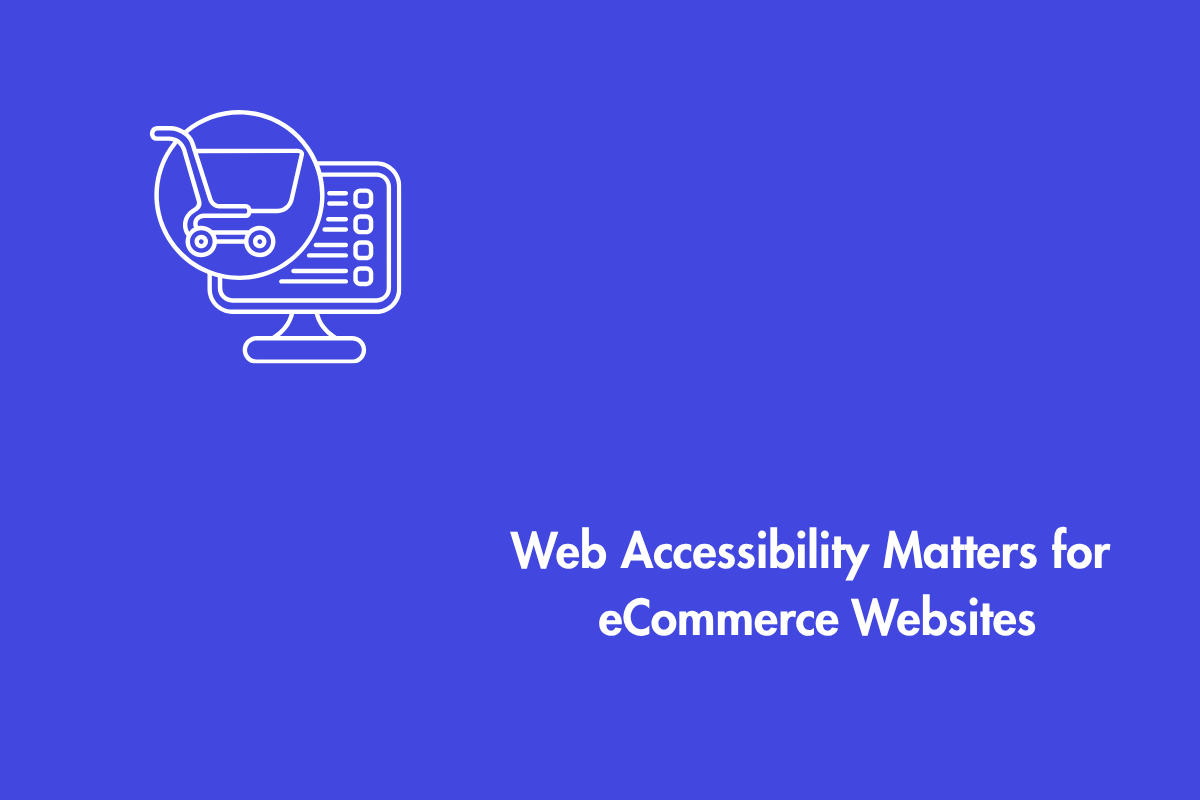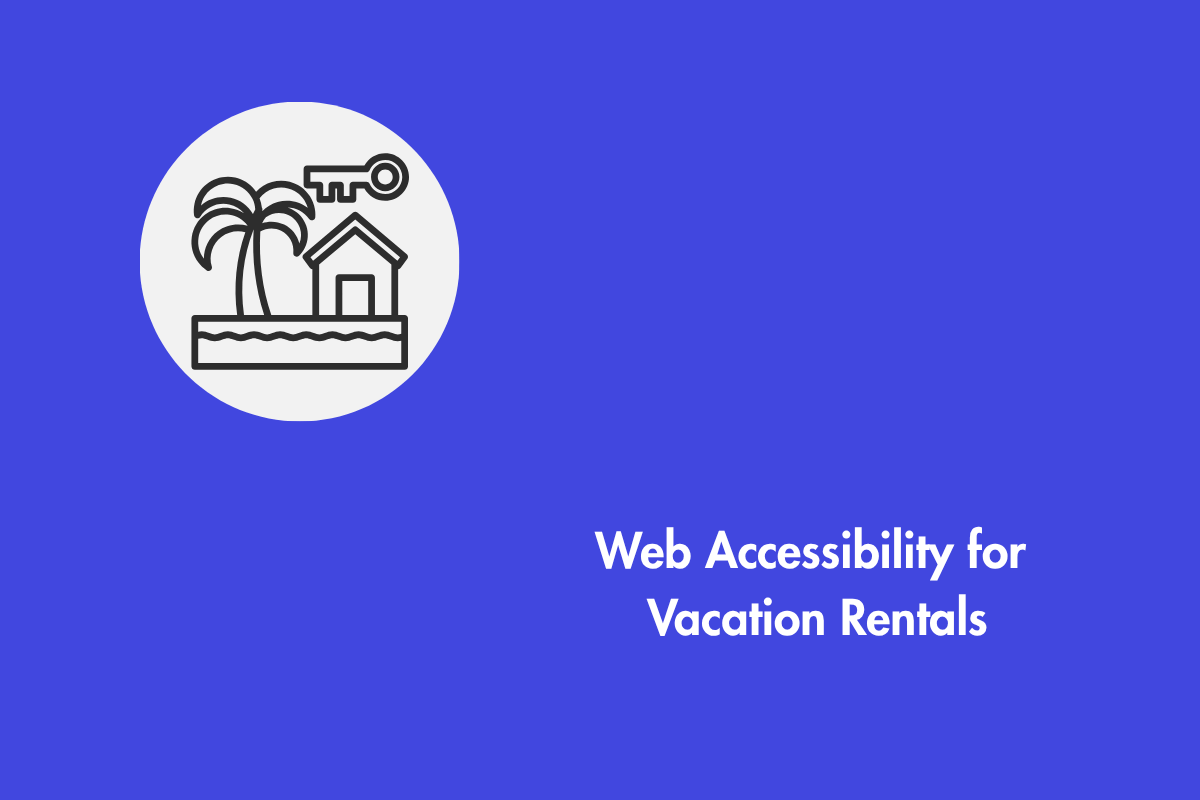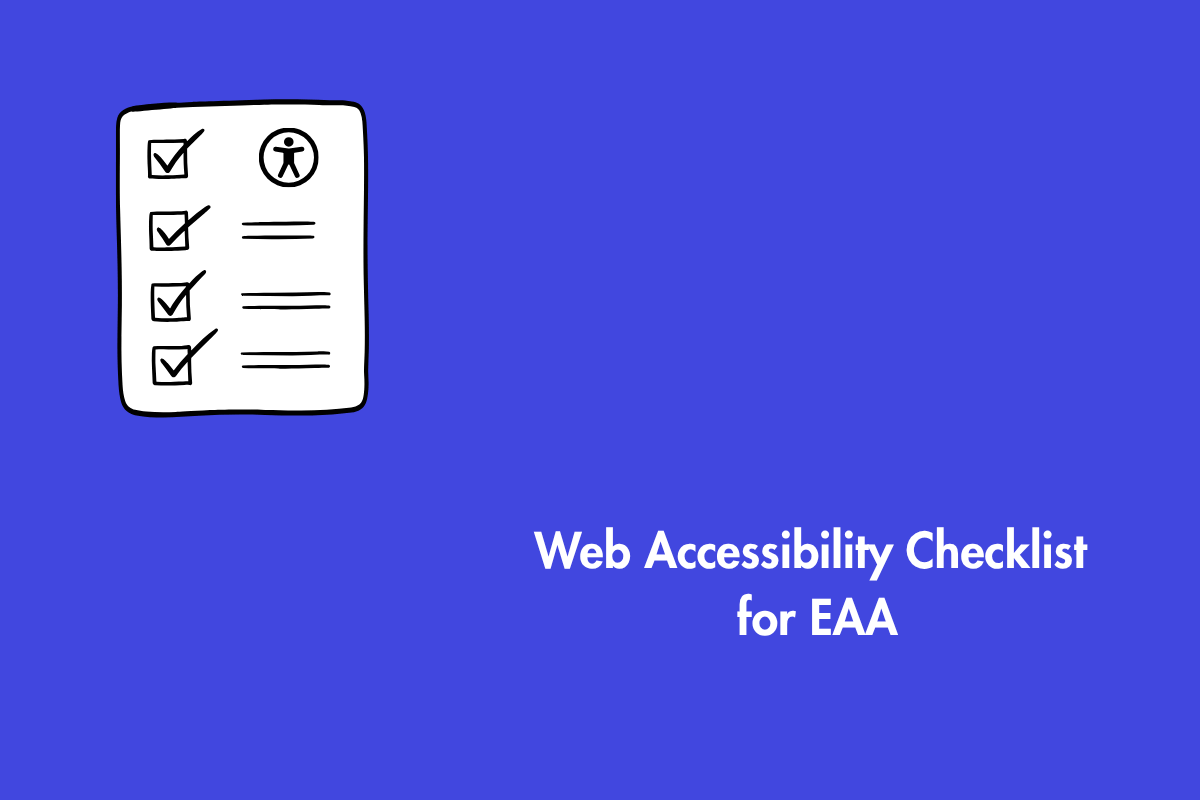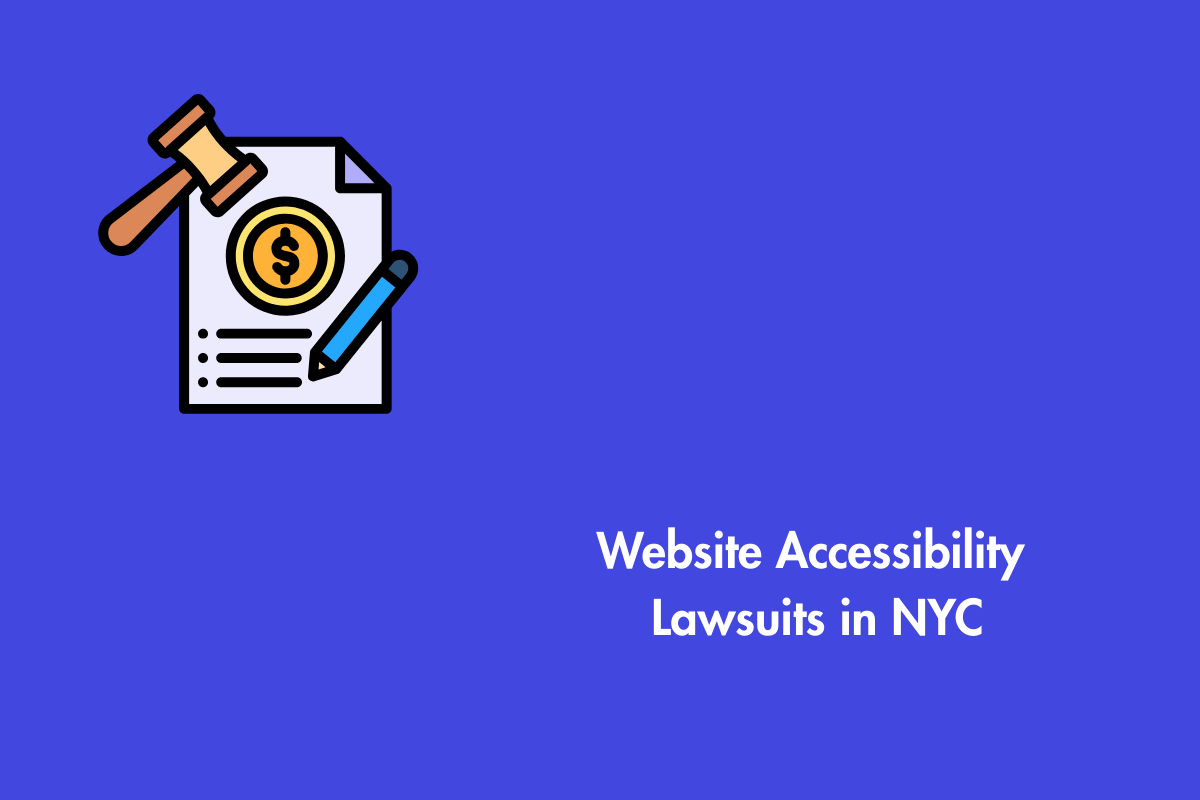You probably worry a lot about traffic, conversion rates, and SEO, if you have an online business. Accessibility is another important factor that you should keep an eye on. And not only for moral grounds, but also for legal reasons.
If you look at any recent digital law news stream, you’ll see a clear pattern. There are a lot of lawsuits claiming discrimination against persons with disabilities, and a lot of them are against e-commerce businesses. It isn’t an accident. It’s a perfect storm of legal precedent, money, and technology and that isn’t very secure.
So, why are internet retailers the main target? The answer is an amalgamation oflaw, business, and human rights. Let’s delve into the article to understand further.
Table of Contents
- 1 The Americans with Disabilities Act, a Legal Hammer
- 2 The Bullseye on E-Commerce: Why Online Stores Are a Prime Target
- 3 Beyond the ADA: WCAG
- 4 The Mechanics of a Lawsuit: How This Typically Plays Out
- 5 It’s Not (Just) About the Law: The Business Case for Accessibility
- 6 Cost of an inaccessible store
- 7 How to Protect Your Online Store and Do the Right Thing?
- 8 The Bottom Line
The Americans with Disabilities Act, a Legal Hammer
Our first order of business is to get a firm grasp of the American with Disabilities Act (ADA), the piece of legislation that is lighting this fire. Discrimination against people with disabilities is outlawed in all spheres of public life by this historic civil rights statute that the Congress produced in 1990.
Title III of the ADA covers “places of public accommodation,” which includes everything from retail stores and restaurants to hotels, senior care facilities, and most businesses that serve the public..
The wording of the ADA doesn’t say anything about websites. Plaintiffs’ lawyers have taken advantage of this lack of clarity, which made the law unclear. They say that a website, especially one for a business that also has a physical location, is like a “digital storefront.” Therefore, it qualifies as a place of public accommodation and must be accessible.
The courts largely agree. A steady stream of court decisions around the country has made it clear that the ADA does apply to websites and mobile apps. This changes the ADA from a law about physical ramps to the one including digital ramps, such as screen readers, keyboard navigation, and captions.
Let us also take a moment to understand Section 508, a U.S. federal law, here. The U.S. Department of State is dedicated to making its digital content easy for everyone to use, including people with disabilities.
Following Section 508 guidelines, the Department works to ensure that all users have equal access to its Information and Communication Technologies (ICT) by complying with or exceeding the requirements of Section 508 of the Rehabilitation Act of 1973, as amended (29 U.S.C. 794d).
While the ADA protects against disability discrimination and often follows WCAG guidelines, Section 508 requires federal agencies and contractors to meet WCAG 2.0 Level AA standards.
The Bullseye on E-Commerce: Why Online Stores Are a Prime Target
While all websites face potential risk, online stores attract the most attention for several compelling reasons.
Online stores often feature interactive elements like carousels, filters, popups, and third-party tools. However, if these aren’t designed with accessibility in mind, they can be difficult or impossible to use for people relying on assistive technologies such as screen readers or keyboard navigation.
Here’s a detailed understanding of how this happens:
1. They Are Places of Public Accommodation in the Purest Sense
An online store doesn’t just provide information; it facilitates commerce. It is a digital version of a retail shop. If a brick-and-mortar store must have a ramp for wheelchair access, the logical extension is that its website must be accessible to someone who is blind and uses a screen reader.
Courts see denying access to products and services online as no different from blocking the entrance to a physical store. The core function, shopping, is identical.
2. The Financial Stakes Are Obvious and High
Lawsuits follow money. An online store has a clear, quantifiable revenue stream. A plaintiff can easily argue that an inaccessible website directly denies them the ability to spend money, causing tangible economic harm. This creates a strong claim for damages.
In contrast, suing a purely informational website (like a blog) might only yield claims of discrimination, which is harder to quantify monetarily. For e-commerce, the financial injury is clear, making it a more attractive target for litigation.
3. They Are Complex by Nature, Leading to More Errors
Think about the intricate functionality of a typical online store:
- A dynamic product catalog with images needing alt-text
- A multi-step checkout process requiring precise form labels
- Dropdown menus, carousels, and size pickers are all interactive features.
- Shopping carts that update dynamically
- Third-party plugins for reviews, payments, and shipping
Each of these features present a potential point of failure for accessibility. A missing alt-text description on a product image makes it invisible to a blind user. A checkout form field without a proper label prevents a screen reader user from knowing what information to enter. A video product demo without captions excludes a deaf user. The complexity of e-commerce sites inherently increases the surface area for accessibility errors.
4. They Are Highly Visible and Easy to Test
Finding targets is easy. People, who are suing, or lawyers may just Google “online clothing stores” or “buy furniture online” and start experimenting. Automated scanning technologies can swiftly go over a site and highlight thousands of possible problems, such as poor color contrast, missing link text, or heading structures that aren’t right. Because it’s easy to figure out who you are, e-commerce sites are easy targets.
5. The Impact of Exclusion Is Immediate and Frustrating
Imagine finally finding the correct goods online, but you can’t pick the appropriate size because the dropdown menu won’t function with your keyboard. You may also come to the checkout page and not know what you did wrong since the notice is merely shown in color (for example, a red outline).
These aren’t just small problems for a person with a handicap; they are full-on impediments to engagement. This frustration makes people want to use the law to hold businesses accountable.
Beyond the ADA: WCAG
The ADA makes it a legal necessity, but it doesn’t explain how to accomplish it. This is where WCAG comes in.
For Universal Online Content Accessibility, the World Wide Web Consortium (W3C) created WCAG. U.S. courts have traditionally followed WCAG 2.1 Level AA for ADA compliance.
Commonly abbreviated as “POUR,” WCAG breaks accessibility down into four primary concepts:
Perceivable:
Users must be able to perceive the information being presented. This means providing text alternatives for non-text content, captions for videos, and content that can be presented in different ways without losing information.
Operable:
Users must be able to operate the interface. This includes making all functionality available from a keyboard, giving users enough time to engage with the content, and helping them navigate and find content easily.
Understandable:
Users must be able to understand the information and the operation of the user interface. This involves clear, readable text, predictable layouts, and helpful input guidance to prevent and correct errors.
Robust:
Content must be robust enough to work reliably with current and future user tools including assistive technologies.
When a lawsuit lands on a retailer’s desk, it almost always includes a lengthy list of specific WCAG failures found on their site.
The Mechanics of a Lawsuit: How This Typically Plays Out
You don’t just get sued out of the blue. The process often follows a pattern:
1. A Demand Letter:
A law firm representing a plaintiff (often a serial litigant) will send a demand letter to the company. This letter will detail the alleged accessibility barriers on the website, list the specific WCAG criteria they violate, and state that the site discriminates against the plaintiff. It will demand a monetary settlement and require the company to remediate its website to achieve WCAG compliance.
2. The Settlement:
Many companies, fearing costly litigation, negative publicity, and the complex technical challenges of a legal battle, choose to settle quickly. These settlements can range from tens of thousands to hundreds of thousands of dollars, plus attorney fees, and always includes a mandate to fix the website.
3. The Lawsuit:
If the company disputes the claim, the plaintiff’s firm will file a formal lawsuit in federal court. This initiates a long, expensive, and highly visible legal proceeding.
The sheer volume of these letters and lawsuits has created a cottage industry for a small group of law firms that file hundreds, sometimes thousands, of these claims each year.
It’s Not (Just) About the Law: The Business Case for Accessibility
Framing this issue purely as a legal defense misses the larger point. Proactive accessibility is simply good business.
Expand Your Market:
Over one billion people globally live with some form of disability. They manage billions in disposable income. An enormous client base along with their friends and family, will be deliberately turned away if accessibility is disregarded.
Improve the Experience for Everyone: Accessibility features often benefit all users. Here are a few key tips:
- Whether in quiet offices or in boisterous gyms, captions are beneficial.
- Clear navigation and well organized content boosts SEO and reduces exit rates.
- High contrast helps in bright sunlight, and a simple checkout works for users with cognitive disabilities and impatient shoppers alike.
- Features like dark mode, text-to-speech, and captions go a long way. They support users with disabilities, but also benefit multitaskers, language learners, and anyone watching videos on mute.
- Clear, structured content helps everyone find what they need faster. Good headings, alt text for images, and simple language aren’t just best practices, they’re better for your users and your business.
- Designing for accessibility results in a more user-friendly and robust experience for all users.
Enhance Your Brand:
Demonstrating a commitment to inclusivity builds brand loyalty and positive public perception. It shows you value all customers. In an era where consumers choose brands that align with their values, accessibility is a powerful statement.
Cost of an inaccessible store
In 2024, online retailers were the focus of 77% of all U.S. web accessibility lawsuits, making e-commerce the most litigated digital sector. Over 30% of the top 500 sites faced lawsuits that year.
While major brands like Amazon and Domino’s have been sued, smaller retailers like Don Roberto Jewelers have also faced legal action, reinforcing that accessibility laws apply to businesses of all sizes.
These lawsuits are often preceded by demand letters, which signal exclusion of users with disabilities and can cause significant reputational damage. Beyond legal costs, inaccessibility undermines brand trust and cuts off access to a large, valuable customer base.
How to Protect Your Online Store and Do the Right Thing?
Fear can spark action, but lasting progress comes from seeing accessibility as an opportunity and not just a legal risk. Inclusive design improves user experience, expands your customer base, and strengthens brand trust. Here’s how to take meaningful steps:
Acknowledge the Issue:
The first step is accepting that this is a real and pressing concern for your business, both legally and ethically.
Educate Your Team:
Ensure that everyone involved in your website—developers, designers, content creators, and product managers—understands the basics of accessibility and WCAG.
Conduct an Audit:
You cannot fix what you do not know is broken. Hire an expert accessibility consultant or use reliable automated tools (followed by manual testing) to conduct a thorough audit of your site against WCAG 2.1 Level AA guidelines.
Prioritize and Remediate:
Fix the critical barriers first. Focus on core user journeys: navigating the site, reading product pages, adding items to a cart, and completing checkout.
Build Accessibility Into Your Process:
Don’t just fix the old problems; stop creating new ones. Make accessibility a core requirement in your design sprints, development cycles, and content publishing workflows.
Seek Feedback:
Talk to real users especially those who rely on accessibility features to find out what’s working and what’s not. Their firsthand experience can give you insights no automated tool ever could.
The Bottom Line
Online stores aren’t being targeted because they are “bad” or “negligent”. It’s because they represent the heart of the digital public square—commerce itself. The law is finally catching up to technology to ensure that this modern town square is open to everyone.
Thinking of accessibility as a legal checkbox is a defensive, fear-based approach. Instead, see it for what it truly is: an unparalleled opportunity to serve more customers better, build a stronger brand, and future-proof your business. In the end, building an accessible online store isn’t just about avoiding lawsuits; it’s about welcoming the whole world in and that’s just good business. Contact us today to understand better about accessibility and online stores.



